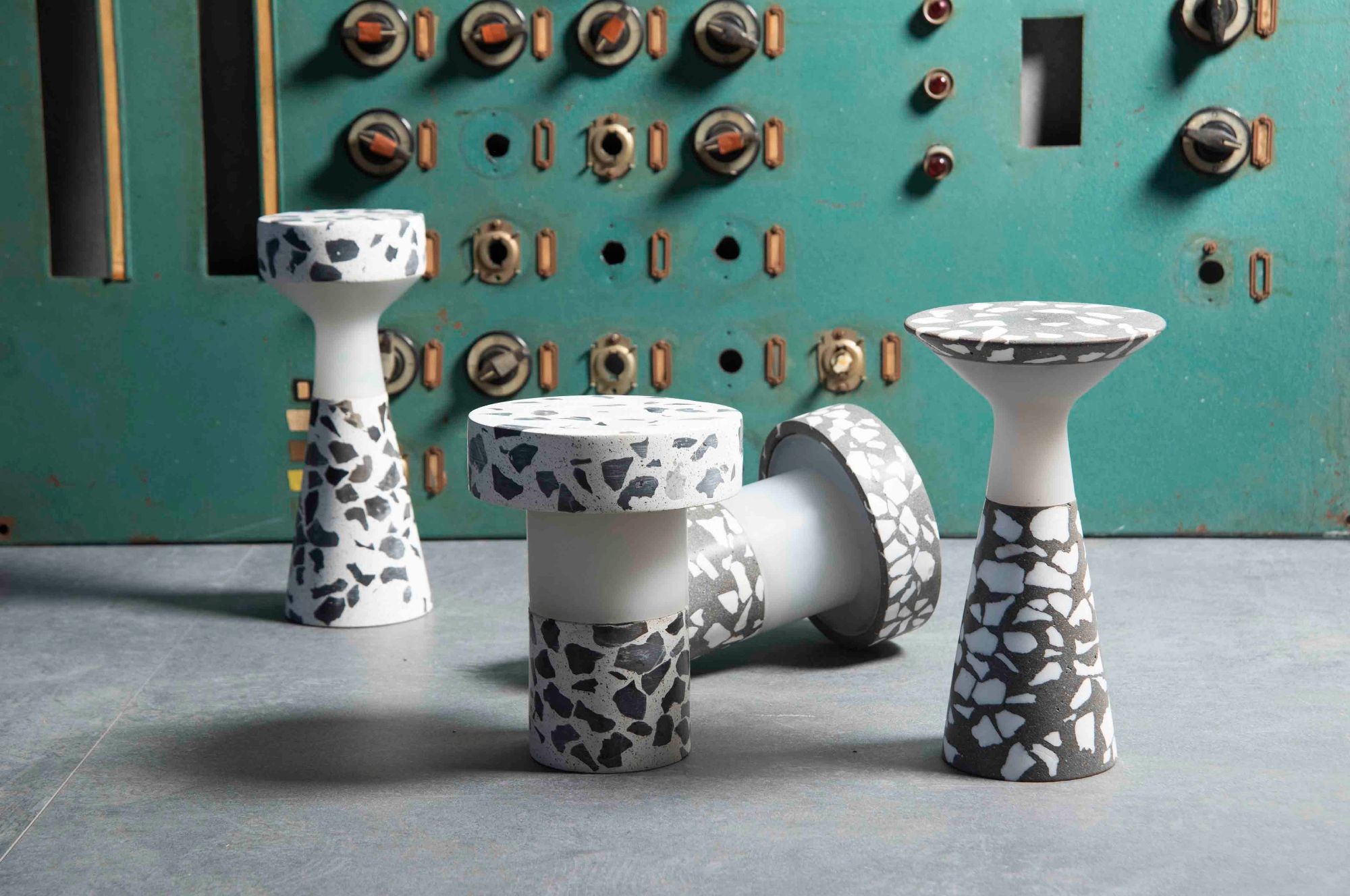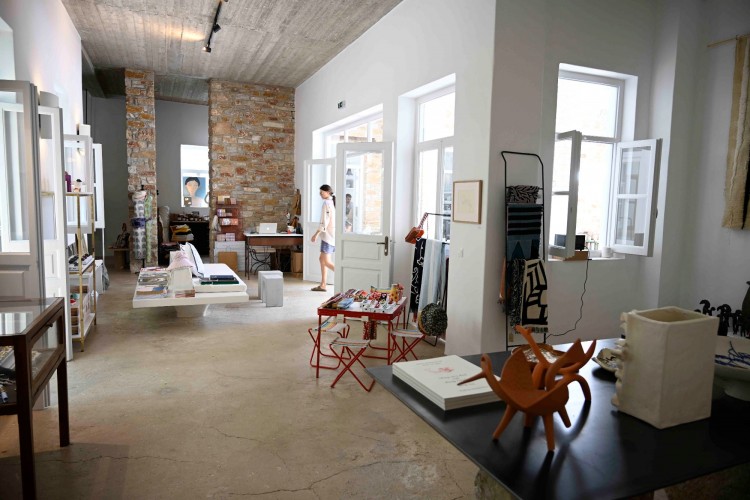Sotiris Lazou Design Studio exports timeless design, looking towards the future
DS.WRITER:
Vasilis Xifaras
Image: Urbi et Orbi
In searching for Greek creators with a constant presence in the field of design within and beyond the country, undoubtedly one has to mention Sotiris Lazou Design Studio. Founded in 1995 by Sotiris Lazou, an industrial & interior designer, and Vicky Gliati, an interior designer & stylist. In the 27 years of their venture, Sotiris Lazou has designed over 350 items, of which almost half have been released by al2 around the world. A characteristic feature of his design, as he will explain later, is his belief in archetypal forms and the balance between automation and craftsmanship.
The studio's furniture pieces, from lamps, seating, beds, tables, as well as handles and pet houses, are distinguished by rectangular volumes and simple geometries. The recognizable identity formed over time is what helped promote the design of Sotiris Lazou abroad. Among these creations, we distinguish the following:
Cosmos Coffee Table, 2008
This impressive table was created with the use of Corian, a type of granite that is durable, non-porous, smooth and malleable. Drawing inspiration from the paper that is folded under a glass of espresso, Sotiris Lazou designed the coffee table with two levels that are smoothly joined together. In fact, this design has been awarded by the Chicago Athenaeum: Museum of Architecture and Design.
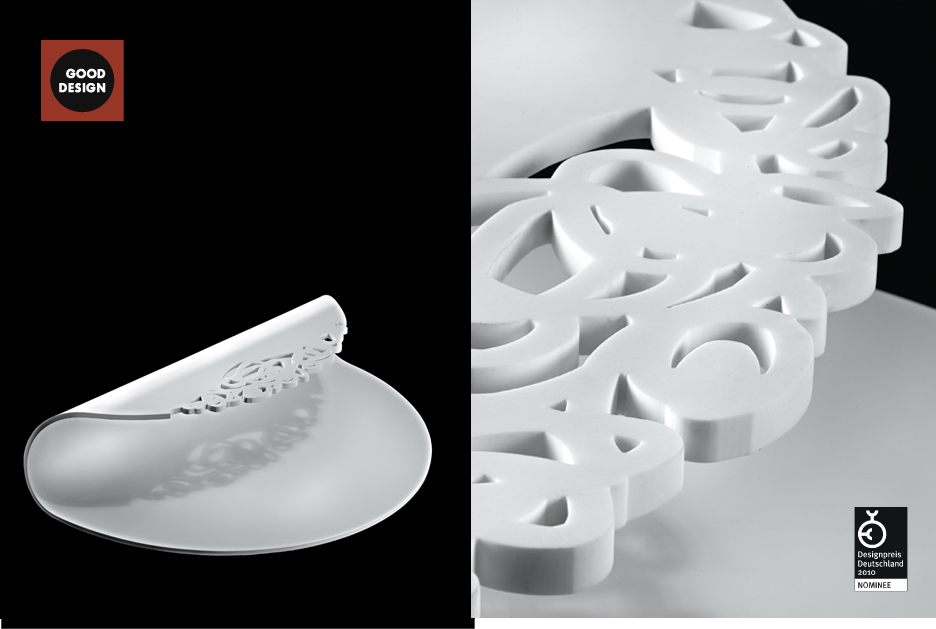
Bo-em Collection for Al2, 2015
For this series, industrial design is combined with the aesthetics of handcrafts. In the tables, consoles and storage spaces, apart from wood, the contrast between the orthonormal geometry and the curved bases of the furniture dominates, while the ethnic pattern detailing and the matting stand out.
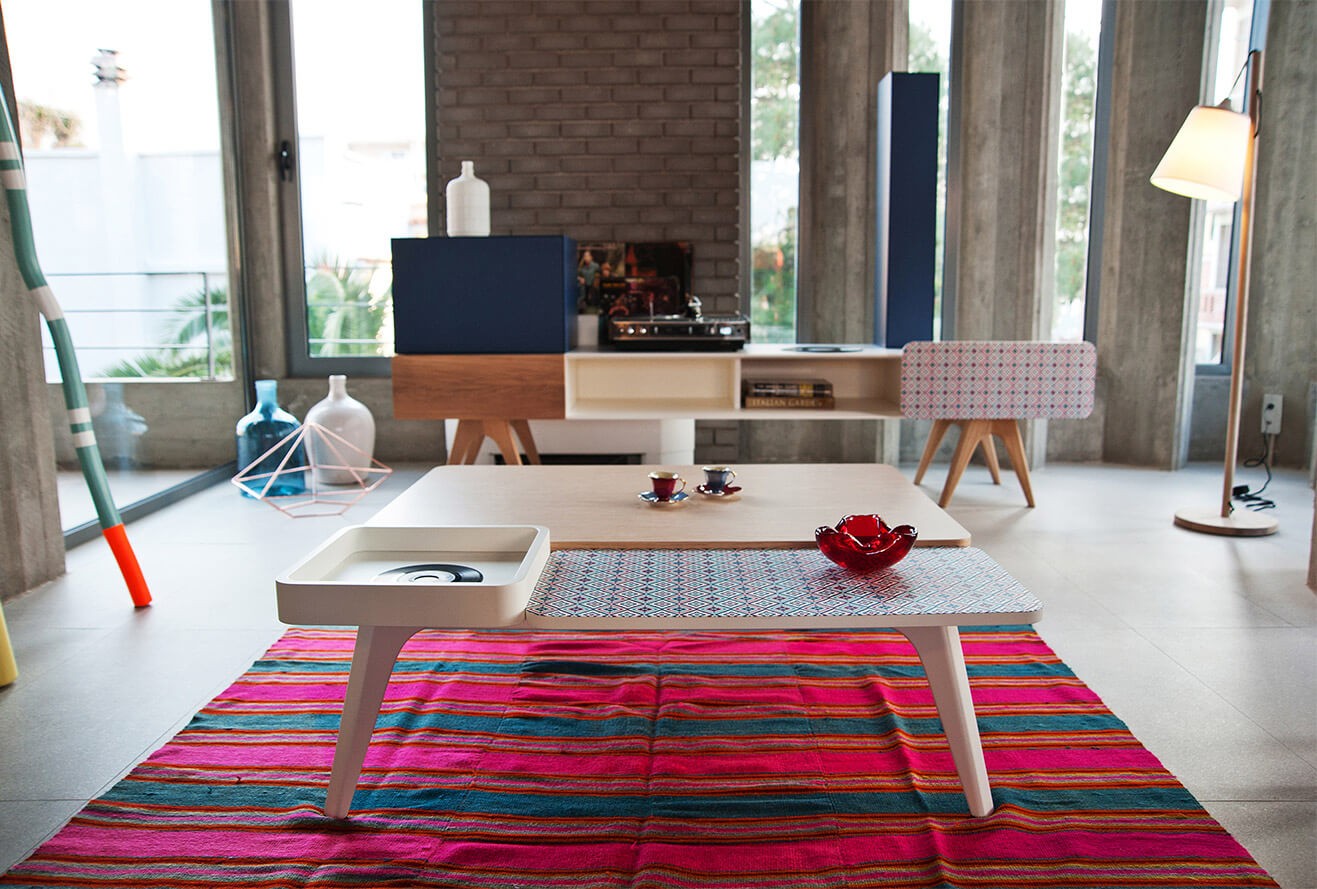
Image: Panagiota Karastergiou, Styling: Vicky Gliati
Objects for Urbi et Orbi, 2018 - 2021
For the LucerA series, small portable table lamps were made with cast-in-place concrete and semi-translucent resin, with the use of the terrazzo technique. Solid wash basins, the Tuuub pendant lamp, sculptural candlesticks and a unique pen made from concrete had previously been designed for the same company. The LucerA series recently received the "Good Design Award" from the Chicago Athenaeum: Museum of Architecture and Design and from the European Center for Architecture Art Design and Urban Studies.
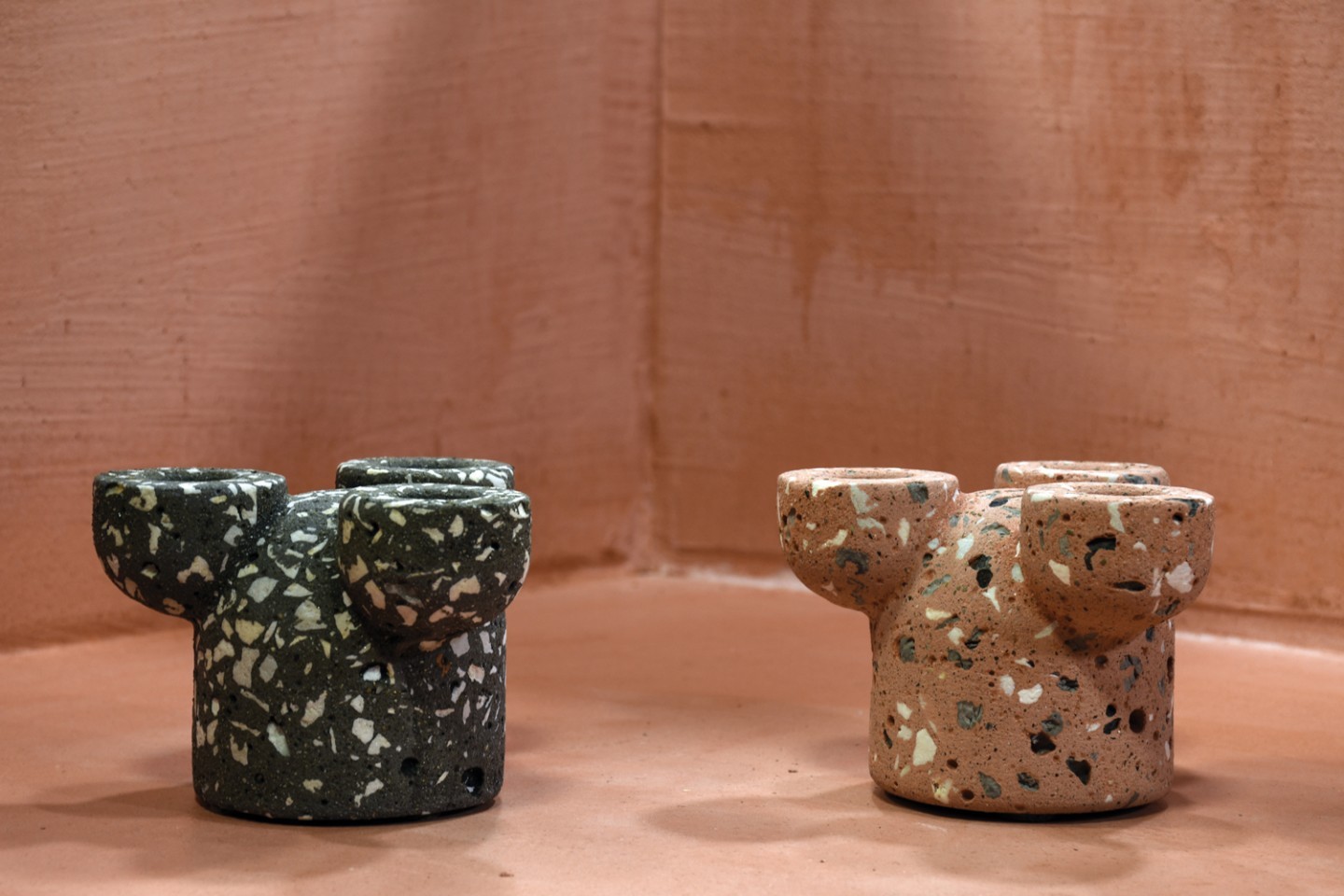
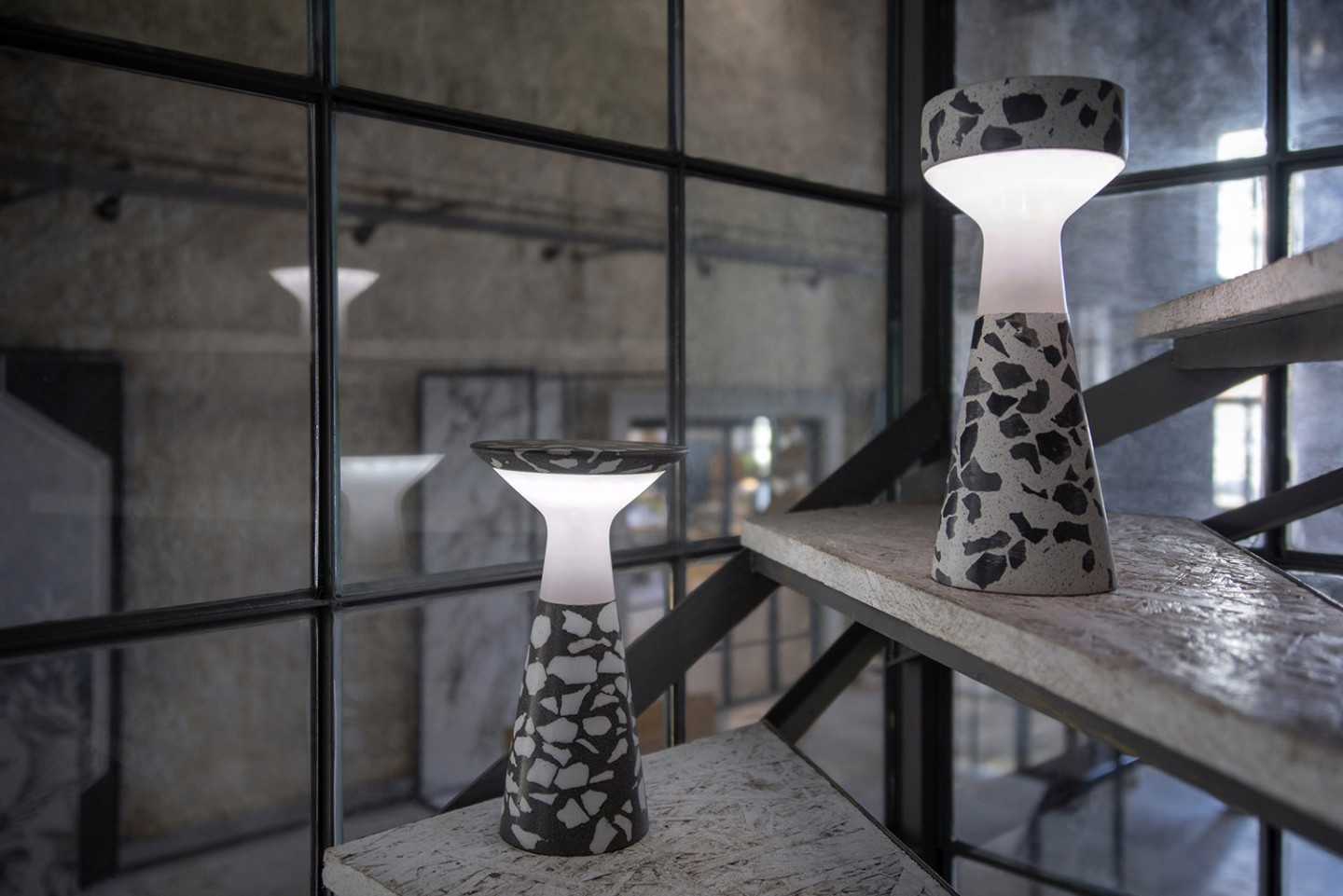
Image: Urbi et Orbi
We talked with Sotiris Lazou to learn more about the character of the objects drawing attention in our country as well as abroad.
You can tell from the samples we presented that in your work you maintain your personal "language" and at the same time harmonize with current trends. How do you accomplish this?
I will mention one case as an example. During a discussion I was having with architects a few years ago, I mentioned to them that mosaic would become the upgraded version of concrete: it was a natural development we could predict. Through research and study, we can tell what will be the next trend, without resorting to online platforms to see what is already there. This research concerns, among other things, the available materials, and the prevailing conditions but also a prediction of how quickly the material of the current -so to speak- trend will “burn out”. For the Bo-em Collection of 2015, we worked a lot with wicker, a material that became a trend just last year. Usually, each of our collections starts selling after two years, maybe even three! Initially, there are some perceptive buyers but as time goes by items come to be "in fashion" so to speak. It goes without saying that we remain consistent in the way we design and build. After all, the design of our studio exudes this knowledge of construction, which is why it remains contemporary.
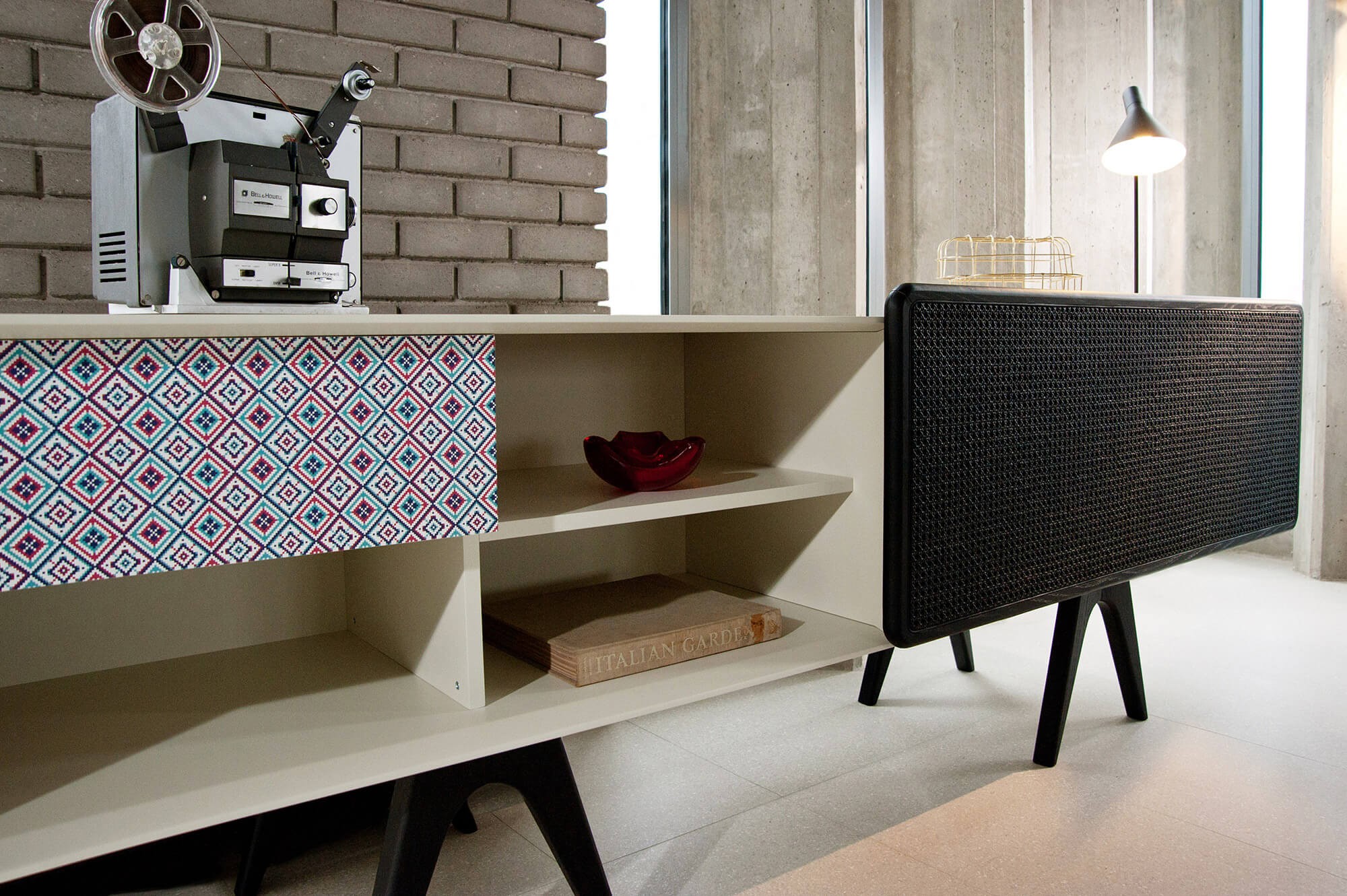
Bo-em Collection for Al2 | Image: Panagiota Karastergiou, Styling: Vicky Gliati
Therefore, we could say that even though your objects differ from collection to collection, they maintain some distinctive characteristics so they can be purchased today even if they were designed 20 years ago.
That's right, they are being purchased. Design is something that should last. We are not in the business of fast fashion or fast design, instead, we produce items that hold true because they adhere to certain principles such as proper construction. If it is well designed, it will become a classic, timeless piece. In fact, there is no need to recycle or destroy objects to create new ones, from the materials of the old ones, when what we design in the first place lasts for many years.
Is, subsequently, timelessness a form of sustainable design?
Of course.
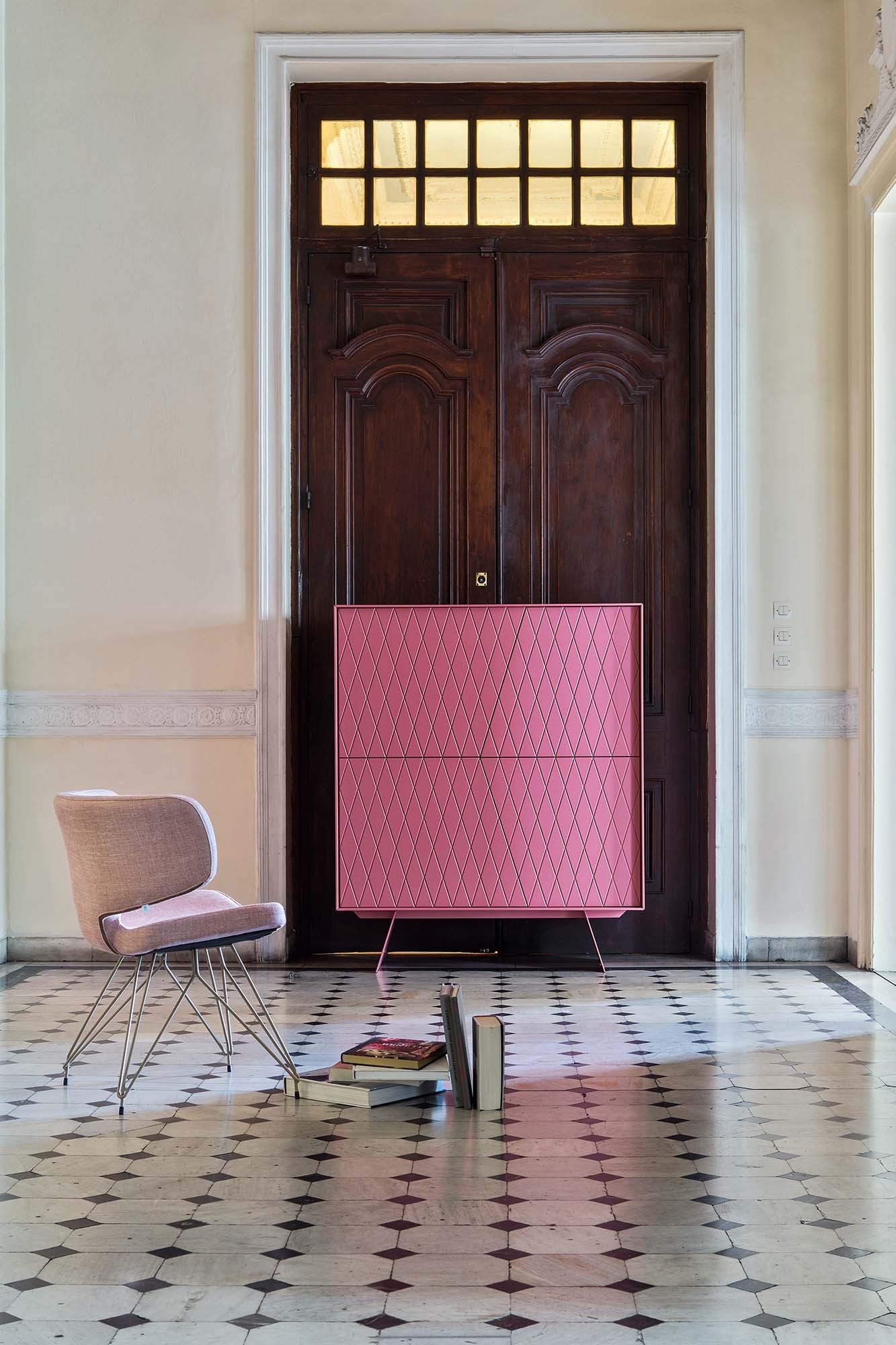
E-klipse Highboard and Omicra Chair for Al2 | Image: Al2
In general, you select different materials but also different means of production. How do you make such choices and what part does locality play?
When you are called to design, you do so knowing the potential of the factory you work with, adjusting the way design will be produced. There’s an amazing result when industrial and handmade production "coexist" since one aids the other. The object chooses its own path. After all, we know in advance the availability of techniques and means, so we judge what can be produced automatically and what cannot. In terms of locality, we definitely choose materials from the local place when they are available. Of course, many times we encounter an obstacle in the "embracing" of such initiatives by the local community.
It’s one of the hardships of Greek design.
One of the greatest in fact. There is no proper education, so people do not know what design can offer them. I believe in the saying of Enzo Mari, whom I had as a professor, that design is a suitcase, and each person puts inside it what they want. The term is open to different interpretations, so misunderstandings occur about what constitutes design or a designer.
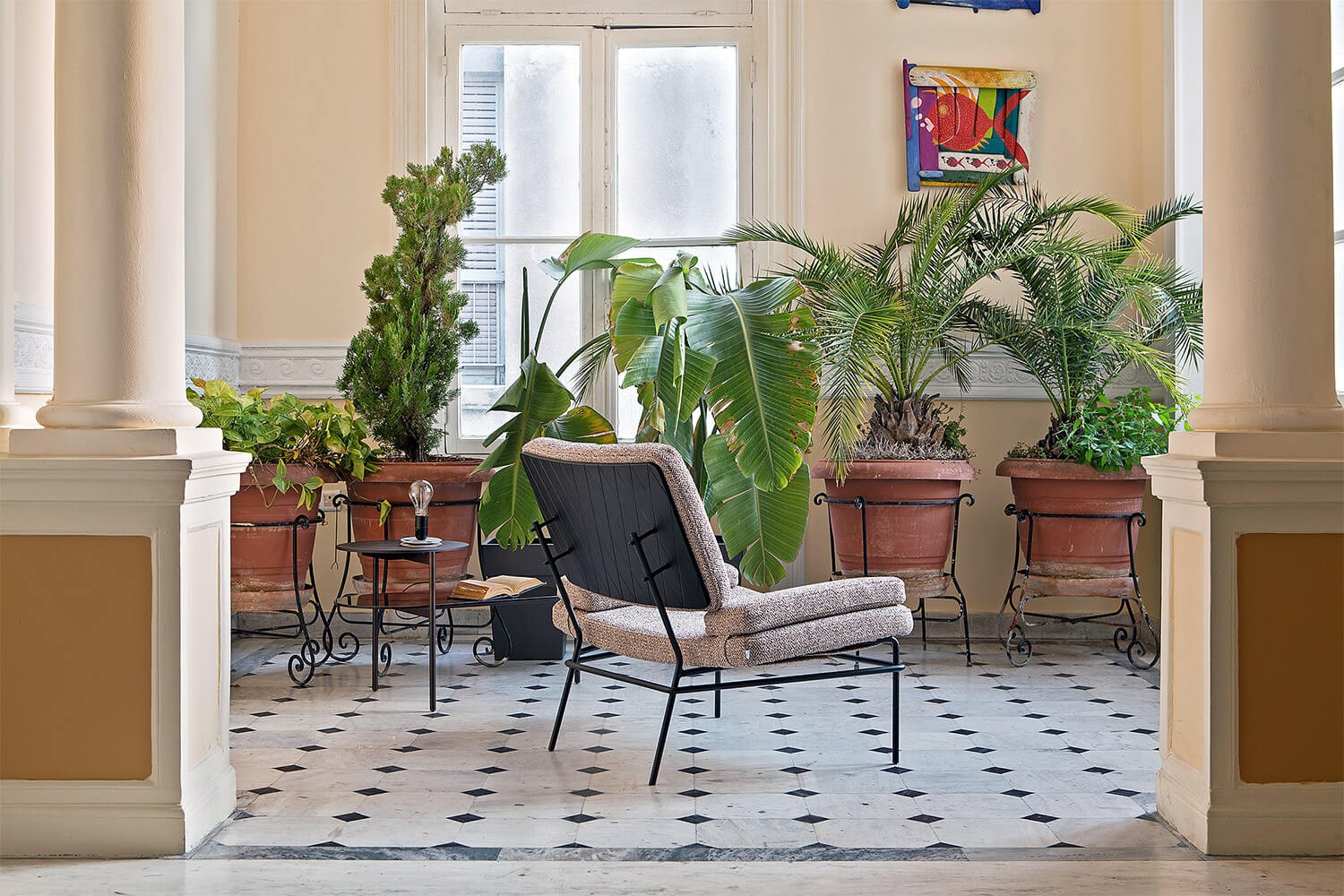
Lip 014 Armchair for Al2 | Image: Al2
I understand that the strengthening and promotion of Greek design is of great concern to you. What steps do you propose, and what is the role of the designer within this condition?
The creator has the most important role, as long as they know that they will design for a local company that will promote local design abroad. In Greece, there is now sufficient logistical availability to do this. I, through the studio, try to support Greek companies, as I will do again this year at the Salone del Mobile in Milan. As long as there is a production of quality design in Greece, the corresponding jobs will be created and the aesthetics of Greeks will be reflected in the result, far from the influences of Italian, Scandinavian and other design. Our country is far away from the big markets, it is like a cut-off island. Of course, an organized collective effort could overcome this hurdle, as various companies have attempted. However, help from the state is also required, perhaps through the establishment of a specialized body.
What are your creative plans for the near future?
Other than the companies with which I am already in collaboration, we are designing handles for a new company and we are also preparing a collection of patio furniture made from recycled aluminium. Soon we will organise an exhibition with marble objects inspired by Peiraeus, in Π Gallery.




